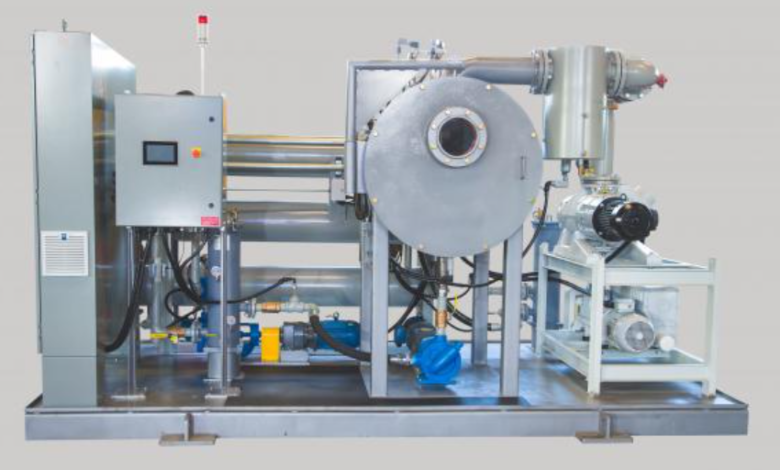Importance of transformer oil filter in Power Systems

Introduction
Transformer oil plays a vital role in electrical power systems, acting as both an insulating medium and a coolant for transformers. Over time, this oil can accumulate contaminants such as moisture, dissolved gases, and solid particles, which degrade its insulating properties and can cause equipment failure. To maintain the quality and performance of transformer oil, the use of a transformer oil filter is essential. This equipment helps remove impurities and restore the oil’s efficiency, ensuring the reliable operation of transformers.
What is a transformer oil filter?
A transformer oil filter is a device used to clean transformer oil by removing contaminants that affect its insulating and cooling capabilities. The filter uses advanced techniques like vacuum dehydration, filtration, and degassing to purify the oil. By removing moisture, gases, and solid particles, the transformer oil filter helps maintain the dielectric strength of the oil, prolonging both oil and transformer lifespan.
Why is transformer oil filtration necessary?
Contamination in transformer oil can lead to several issues:
- Reduced dielectric strength increases the risk of electrical breakdowns
- Moisture causes corrosion and insulation degradation
- Solid particles and sludge can clog cooling systems
- Dissolved gases may indicate internal faults or overheating
Regular filtration using a transformer oil filter ensures these contaminants are effectively removed, preventing transformer damage and unplanned outages.
Components of a transformer oil filter
A typical transformer oil filter consists of the following parts:
- Heating system: Prepares the oil by heating it to reduce viscosity for better impurity removal.
- Vacuum chamber: Removes dissolved water and gases by creating low-pressure conditions.
- Filtration unit: Multi-stage filters trap solid contaminants and sludge.
- Pump system: Circulates oil through the machine.
- Control panel: Monitors temperature, vacuum, and operational parameters to ensure efficient filtration.
Together, these components work to restore oil purity.
How does a transformer oil filter work?
The process involves:
- Heating the oil to 60-80°C to reduce its thickness.
- Passing the heated oil into a vacuum chamber where moisture and dissolved gases evaporate.
- Filtering the oil through fine filters to remove solid contaminants.
- Degassing to eliminate residual dissolved gases.
This continuous cycle cleans the oil to meet quality standards required for safe transformer operation.
Applications of transformer oil filters
Transformer oil filters are used extensively in:
- Power plants for maintaining high-voltage transformers
- Electrical substations as part of preventive maintenance
- Industrial facilities operating large transformers
- Renewable energy sites like wind farms and solar power plants
- Transformer servicing and oil recycling companies
Their ability to ensure clean oil is crucial for the reliability of power infrastructure.
See also: Top Occupational Therapy Techniques for Daily Living
Benefits of using a transformer oil filter
Cost savings
Regular oil filtration reduces the need for new oil purchases and costly transformer repairs.
Enhanced reliability
Clean oil maintains proper insulation and cooling, preventing transformer oil filter failures and power interruptions.
Environmental protection
Filtering transformer oil promotes recycling and reduces hazardous waste.
Safety improvement
Removing moisture and gases lowers the risk of electrical faults and fires.
Maintenance of transformer oil filters
To keep the filter functioning effectively:
- Replace filters at recommended intervals
- Monitor vacuum and temperature settings regularly
- Inspect for leaks or damaged components
- Clean heating elements and vacuum chambers periodically
- Schedule professional maintenance for calibration and repairs
Routine upkeep ensures optimal filtration performance.
Technological advancements
Modern transformer oil filters include:
- Automated controls with real-time data monitoring
- Energy-efficient designs to reduce consumption
- Portable units for on-site servicing
- Improved filter media for enhanced contaminant removal
- Integration with smart systems for predictive maintenance
These features increase filtration accuracy and ease of use.
Selecting the right transformer oil filter
Consider the following before purchase:
- Oil volume and required filtration speed
- Type and level of contamination
- Compatibility with transformer oil types
- Automation preferences and user interface
- Budget and service support availability
Choosing the right model ensures efficient and cost-effective oil purification.
Conclusion
A transformer oil filter is essential equipment for maintaining transformer health and performance. By effectively removing contaminants, it prolongs oil and transformer life, reduces operational costs, and supports environmental sustainability. Adopting regular filtration practices with a reliable transformer oil filter helps ensure uninterrupted power supply and safer electrical systems.







